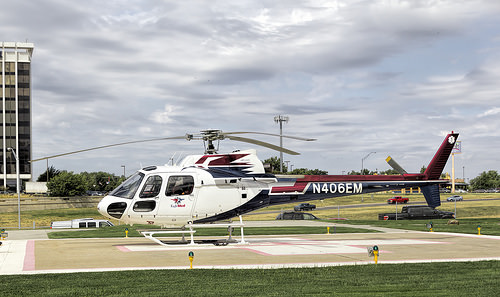EagleMed, a US Air Ambulance company, has come up with an innovative method to train its clinical practitioners through a Mobile Air Medical Education Unit. The unit is capable of simulating the medical operations that are present inside the air ambulance company’s choppers and airplanes. The unit is trailer-based and efficiently reproduces the environment inside the air ambulance organization’s choppers and airplanes. The training simulator has been designed in conjunction with Gaumard Scientific and CAE, Inc.
The US Air Ambulance Company’s Simulator is Highly Advanced
The training simulator has not come cheap and has cost the company about $250,000. The simulated patients can replicate real-life medical emergencies. The blood pressure, pulse rate, breathing pattern and symptoms of the simulated patients can be manipulated through computers. The trailer is about 24 foot long and can create real-life-like situations inside medical choppers and airplanes. EagleMed owns a total of 20 ambulance airplanes and 14 choppers. The simulator can generate situations for cardiac and trauma care, along with real-life medical emergencies. The US air ambulance company plans to take the training trailer to facilities throughout the nation, which number more than 30. It estimates that the whole exercise would take about a year.
EagleMed is a Leader among US Air Ambulance Service Providers
The company claims to be the country’s “largest air medical transport membership network.” What is more interesting, however, is the fact that EagleMed has received numerous awards for its dedication to air medical transport safety. It has reached Level 3 in FAA Safety Management System and has been accredited by CAMTS which is held in high esteem by international air ambulance sector. It has also received Platinum Rating by ARGUS International previously. The US air ambulance company is recognized by FAA.
It is heartening to find a US air ambulance company that is highly dedicated to patient and crew safety, especially in light of the recent hue and cry being raised about medical air transport safety.


